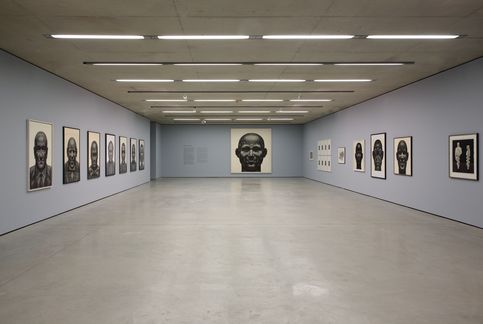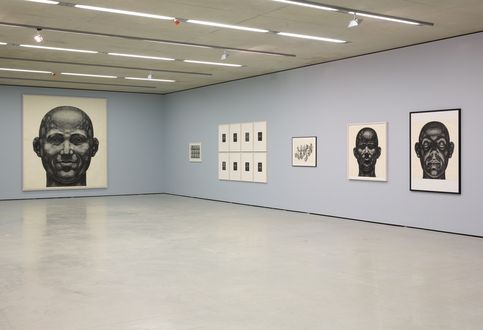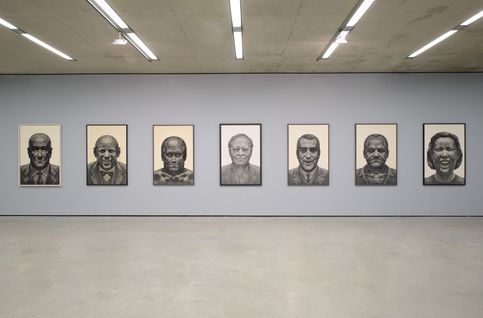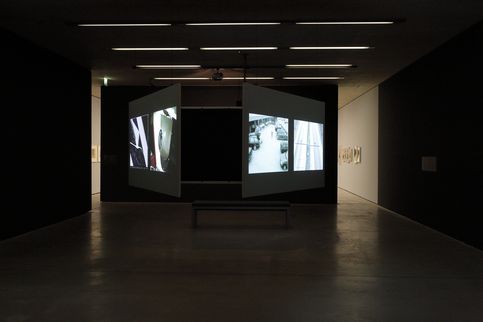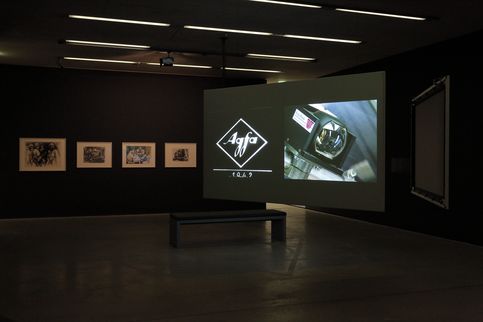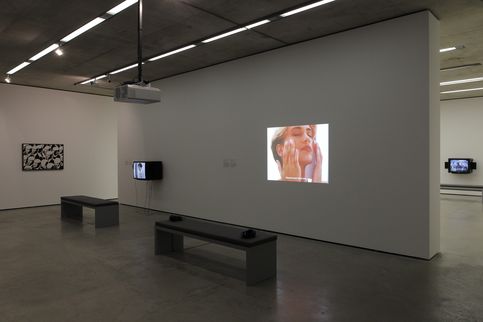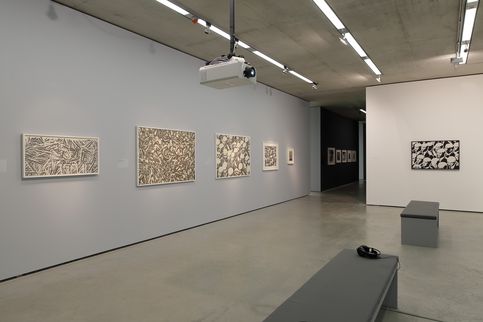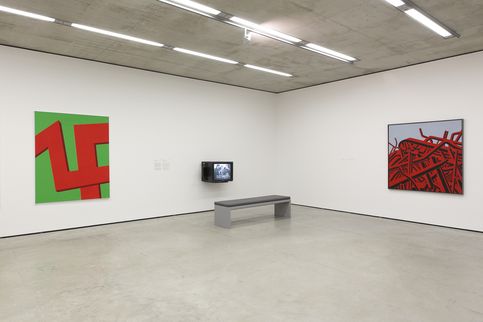The Physiognomy of Power
Harun Farocki & Florentina Pakosta
Curator: Jürgen Tabor, Generali Foundation Collection
Venue: Museum der Moderne Salzburg, Mönchsberg
The exhibition compared and contrasted the work of German filmmaker Harun Farocki and the Austrian graphic artist and painter Florentina Pakosta.
While Harun Farocki has been one of Germany’s most important documentary filmmakers and media artists since the 1970s, Florentina Pakosta is a key figure in the feminist avant-garde in Austria. They both stand for a form of realism that draws on very specific themes and issues from the second half of the twentieth century. The media the two use are certainly quite different, but the deeply political dimension of their works means that they speak comparable languages, often focusing on various uses and experiences of power.
Farocki was a very close observer and analyst of the social conditions of his time. He was politicized during the student protests of the late 1960s. He developed his own documentary and essayistic style, in which he combined his own film shooting with images from other sources such as the mass media and surveillance systems. He was particularly interested in the principles of order by means of which a given society exercises structural violence. His works ask as to the effects of totalitarian surveillance and control systems, for example, or explore everyday life in private and work contexts under conditions of an all-encroaching capitalist logic, or the increasingly complex relationship between humans and machines. Farocki was always interested in the role of images within systems of power. His works show how pictures are internalized, whether by means of surveillance systems, technical image analytics in military and civilian uses, or via television and advertising. This exhibition presented six key works by Farocki from the Generali Foundation Collection, including the double projection I Thought I Was Seeing Convicts (2000) and the trilogy Eye/Machine I–III (2001–2003).
As a young woman, Pakosta was confronted with the fact that women only played minor roles in the worlds of art, business, and politics. She began to make drawings with intensive portrait studies in which she both analyzed her own existence and also took a critical approach to the male face of power that stood against her. She also devised pointed and satirical images in which she addressed patriarchal conditions of power and violence. From the late 1980s, she addressed the excessive world of consumerism and consumption, and then she turned, finally and surprisingly, to a new visual language—an associative vocabulary of geometrical abstraction, which she interpreted politically. This exhibition presented an overview of fifty years of her work. For the first time, a large numbers of works held in the collection of the Museum der Moderne Salzburg was shown, complemented by important loans from the artist and other collections.
This comparison of the work of Harun Farocki and Florentina Pakosta honored two personalities whose thought was shaped by socially critical realism. The exhibition created a lively dialogue between their works, and aimed to establish relationships between the media of film and video, on the one hand, and drawing and painting, on the other, which are frequently seen as completely distinct.

